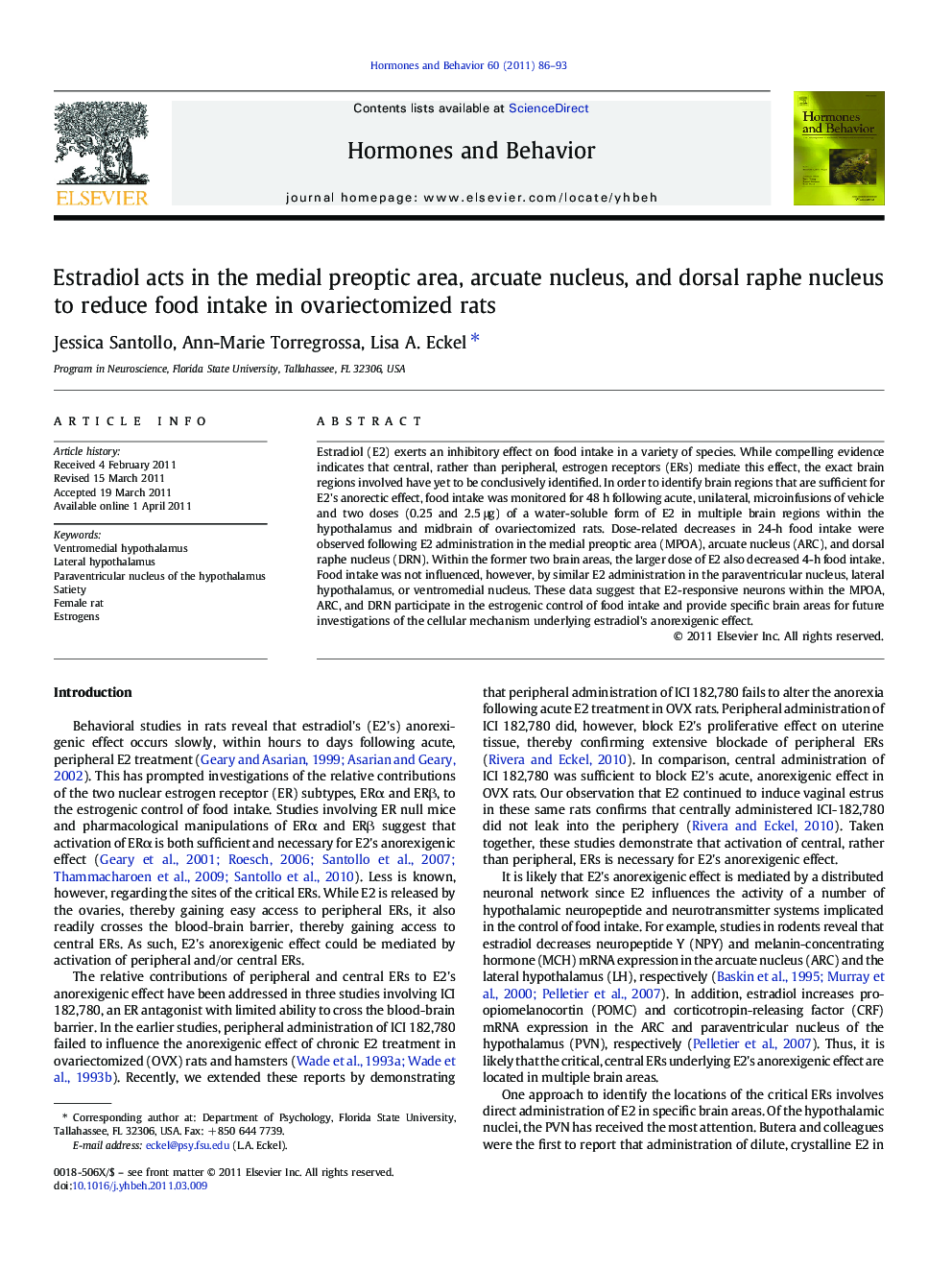| Article ID | Journal | Published Year | Pages | File Type |
|---|---|---|---|---|
| 323452 | Hormones and Behavior | 2011 | 8 Pages |
Estradiol (E2) exerts an inhibitory effect on food intake in a variety of species. While compelling evidence indicates that central, rather than peripheral, estrogen receptors (ERs) mediate this effect, the exact brain regions involved have yet to be conclusively identified. In order to identify brain regions that are sufficient for E2's anorectic effect, food intake was monitored for 48 h following acute, unilateral, microinfusions of vehicle and two doses (0.25 and 2.5 μg) of a water-soluble form of E2 in multiple brain regions within the hypothalamus and midbrain of ovariectomized rats. Dose-related decreases in 24-h food intake were observed following E2 administration in the medial preoptic area (MPOA), arcuate nucleus (ARC), and dorsal raphe nucleus (DRN). Within the former two brain areas, the larger dose of E2 also decreased 4-h food intake. Food intake was not influenced, however, by similar E2 administration in the paraventricular nucleus, lateral hypothalamus, or ventromedial nucleus. These data suggest that E2-responsive neurons within the MPOA, ARC, and DRN participate in the estrogenic control of food intake and provide specific brain areas for future investigations of the cellular mechanism underlying estradiol's anorexigenic effect.
Research Highlights► Estradiol acts in the brain to decrease food intake. ► Infusion of estradiol into the MPOA, ARC, and DRN decreases food intake in OVX rats. ► Infusion of estradiol into the PVN or LH failed to alter food intake in OVX rats.
